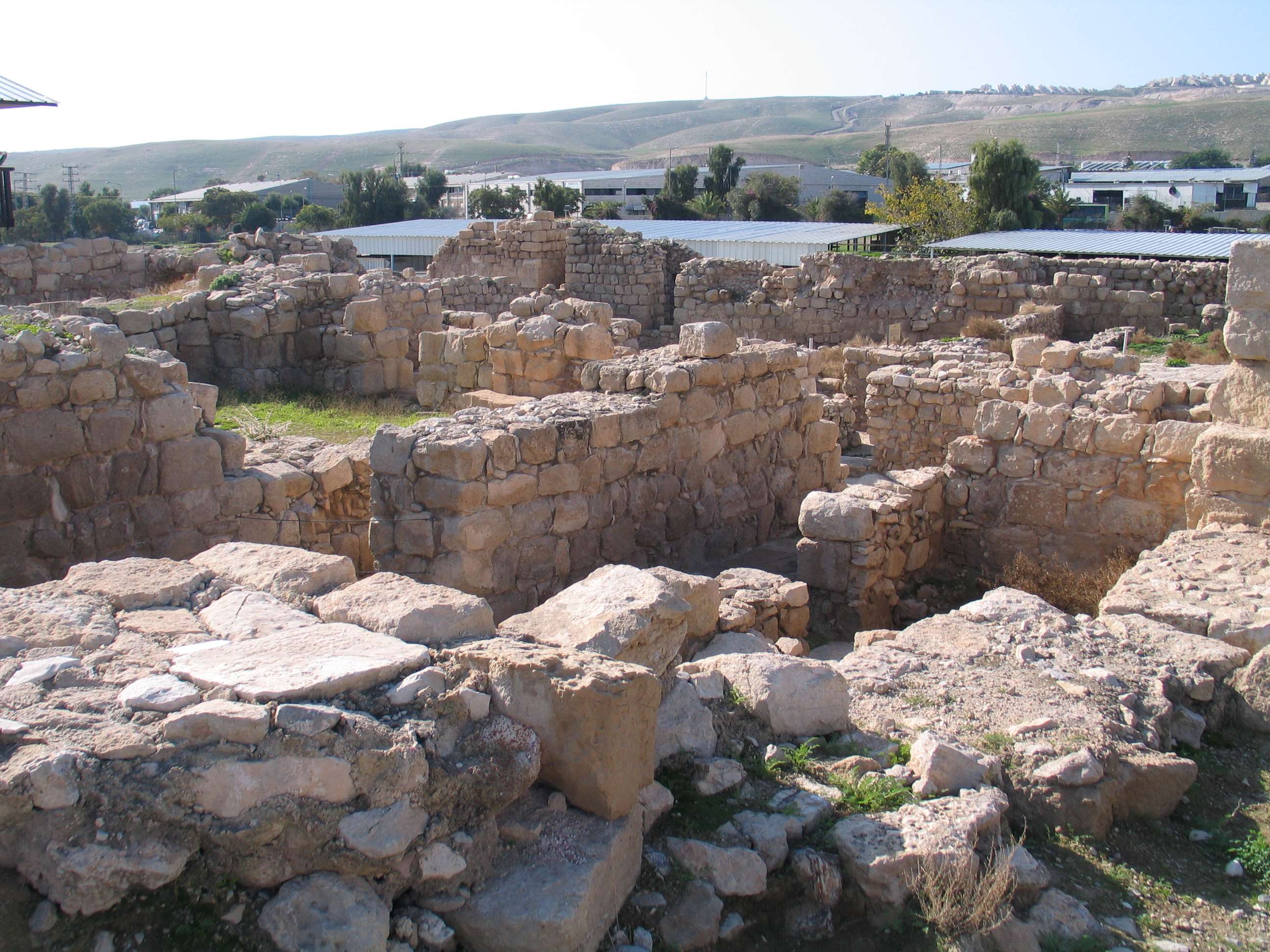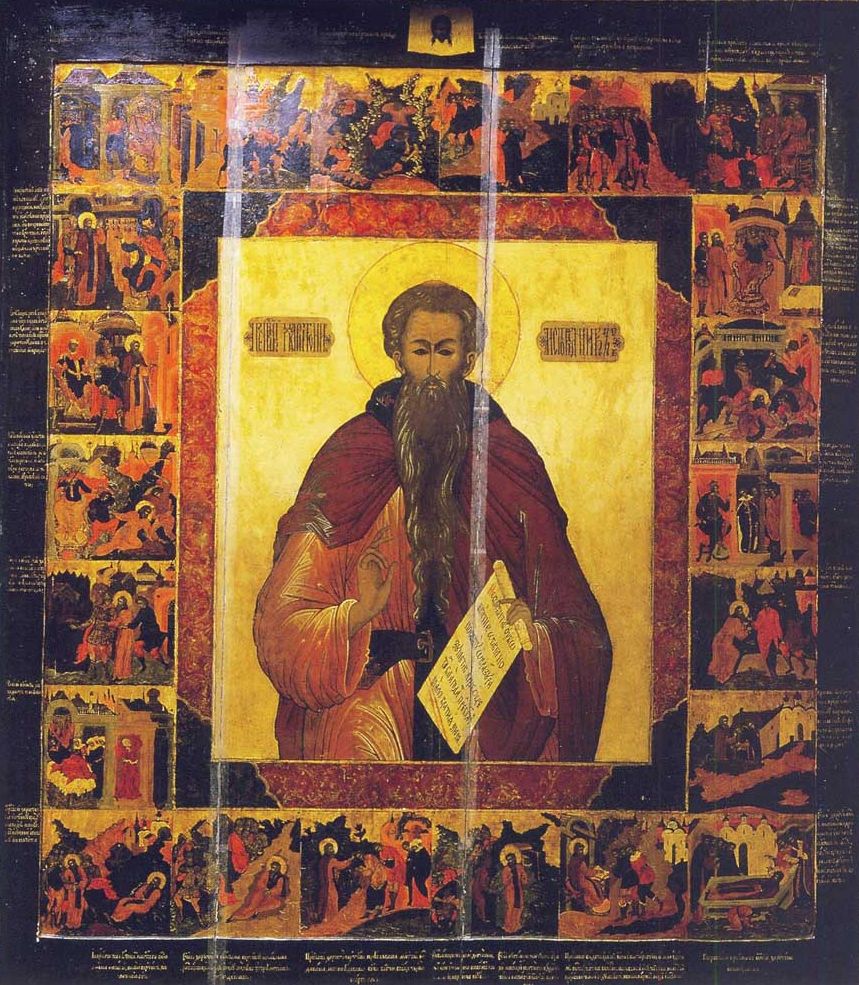|
Euthymius The Great
Euthymius the Great (377 – 20 January 473) was an abbot in Palestine. He is venerated in both Roman Catholic and Eastern Orthodox Churches. Euthymius' ''vita'' was written by Cyril of Skythopolis, who describes him as the founder of several monasteries in the Judaean desert, while remaining a solitary monk in the tradition of Egyptian monasticism. He nevertheless played a decisive role in helping the decisions of the Council of Chalcedon (451) prevail in Jerusalem, in spite of the majority of the monks in the region opposing it. Life Euthymius was born in Melitene in Lesser Armenia, in a pious family of noble birth. According to Christian tradition, his parents, Paul and Dionysia, had prayed for a son at the church of Saint Polyeuctus in Melitene. When the child was born, they named him ''Euthymius'', meaning "good cheer". Euthymius was educated by Bishop Otreius of Melitene, who afterwards ordained him and placed him in charge of all the monasteries in the Diocese of ... [...More Info...] [...Related Items...] OR: [Wikipedia] [Google] [Baidu] |
Saint
In religious belief, a saint is a person who is recognized as having an exceptional degree of holiness, likeness, or closeness to God. However, the use of the term ''saint'' depends on the context and denomination. In Catholic, Eastern Orthodox, Anglican, Oriental Orthodox, and Lutheran doctrine, all of their faithful deceased in Heaven are considered to be saints, but some are considered worthy of greater honor or emulation. Official ecclesiastical recognition, and consequently a public cult of veneration, is conferred on some denominational saints through the process of canonization in the Catholic Church or glorification in the Eastern Orthodox Church after their approval. While the English word ''saint'' originated in Christianity, historians of religion tend to use the appellation "in a more general way to refer to the state of special holiness that many religions attribute to certain people", referring to the Jewish tzadik, the Islamic walī, the Hindu rishi or ... [...More Info...] [...Related Items...] OR: [Wikipedia] [Google] [Baidu] |
Saint Polyeuctus
Saint Polyeuctus (also Polyeuctes, Polyeuktos, Greek: Πολύευκτος) of Melitene (died 10 January 259) was an ancient Roman saint. Christian tradition states that he was a wealthy Roman army officer who was the first martyr in Melitene, Armenia, under Valerian. Symeon Metaphrastes writes that, moved by the zeal of his friend Saint Nearchus, Polyeuctus had openly converted to Christianity. "Enflamed with zeal, St Polyeuctus went to the city square, and tore up the edict of Decius which required everyone to worship idols. A few moments later, he met a procession carrying twelve idols through the streets of the city. He dashed the idols to the ground and trampled them underfoot." He was tortured by the authorities and ignored the tears and protestations of his wife Paulina, his children, and his father-in-law. He was beheaded. Veneration He was buried at Melitene, and a church was dedicated to him there. Christian tradition states that the parents of Euthymius ... [...More Info...] [...Related Items...] OR: [Wikipedia] [Google] [Baidu] |
Bani Na'im
Bani Na'im ( ar, بني نعيم, Banī Naʾīm) is a Palestinian town in the southern West Bank located east of Hebron in the Hebron Governorate of the State of Palestine. It is situated at a higher elevation than most localities in the area, with an altitude of . The town is best known as the burial place of Lot, a fact already mentioned around 400 CE, when it was known as 'Caphar Barucha'. Following the Muslim conquest, its name was eventually Arabicized as . The tomb of Lot was turned into a mosque during Islamic rule and remained so under Crusader rule. Later, the Arab tribe of Bani Nu'aym settled there, giving the town its current name, Bani Na'im, first used by Muslim scholar Abd al-Ghani al-Nabulsi in 1690. During the late 1930s, the population took part in the Arab Revolt against the British Mandate. Following the 1948 Arab–Israeli War, the town came under Jordanian rule. Since the 1967 Six-Day War, Bani Na'im has been occupied by Israel; since 1995, it has b ... [...More Info...] [...Related Items...] OR: [Wikipedia] [Google] [Baidu] |
Wadi Og
Nahal Og or Wadi Og ( he, נחל אוג), or Wadi al-Muqallek, also spelled Wadi Muqallik ( ar, وادي مكلك) is a winterbourne stream on the West Bank that drains the eastern slopes of the Mount of Olives range east of Jerusalem and runs for 30 km till the Dead Sea.Nahal Og at ''Afek Family Travels'' It is the northernmost of the streams that flow from the into the Dead Sea.Nahal Og (Og Stream) at ''Israel Traveler'' Name The |
Cavern
A cave or cavern is a natural void in the ground, specifically a space large enough for a human to enter. Caves often form by the weathering of rock and often extend deep underground. The word ''cave'' can refer to smaller openings such as sea caves, rock shelters, and grottos, that extend a relatively short distance into the rock and they are called ''exogene'' caves. Caves which extend further underground than the opening is wide are called ''endogene'' caves. Speleology is the science of exploration and study of all aspects of caves and the cave environment. Visiting or exploring caves for recreation may be called ''caving'', ''potholing'', or ''spelunking''. Formation types The formation and development of caves is known as '' speleogenesis''; it can occur over the course of millions of years. Caves can range widely in size, and are formed by various geological processes. These may involve a combination of chemical processes, erosion by water, tectonic forces, microorgani ... [...More Info...] [...Related Items...] OR: [Wikipedia] [Google] [Baidu] |
Euthymius The Great
Euthymius the Great (377 – 20 January 473) was an abbot in Palestine. He is venerated in both Roman Catholic and Eastern Orthodox Churches. Euthymius' ''vita'' was written by Cyril of Skythopolis, who describes him as the founder of several monasteries in the Judaean desert, while remaining a solitary monk in the tradition of Egyptian monasticism. He nevertheless played a decisive role in helping the decisions of the Council of Chalcedon (451) prevail in Jerusalem, in spite of the majority of the monks in the region opposing it. Life Euthymius was born in Melitene in Lesser Armenia, in a pious family of noble birth. According to Christian tradition, his parents, Paul and Dionysia, had prayed for a son at the church of Saint Polyeuctus in Melitene. When the child was born, they named him ''Euthymius'', meaning "good cheer". Euthymius was educated by Bishop Otreius of Melitene, who afterwards ordained him and placed him in charge of all the monasteries in the Diocese of ... [...More Info...] [...Related Items...] OR: [Wikipedia] [Google] [Baidu] |
Theoctistus Of Palestine
Venerable Theoctistus of Palestine (also Theoktistos) was an associate of Euthymius the Great. He was an ascetic who lived in a nearby cell at the Pharan lavra. Ascetic life About five years after Euthymius arrived, they went into the desert for Great Lent, and found in a wadi a large cave where they remained praying in solitude for some time. Eventually shepherds from Bethany discovered them, and people from the area began to visit seeking spiritual guidance and bringing food. The monks then built a church. When other monks came seeking instruction, Euthymius and Theoctistus built a lavra over the cave church. Theoctistus became hegumen of the monastery. Euthymius is credited with establishing several monasteries, including that of Theoctistus. Death and commemoration Theoctistus died at an advanced age in 451 and is commemorated on 3 September. References Further reading *{{cite book , title=The Lives of the Saints, url=https://archive.org/details/TheLivesOfTheSaintsV ... [...More Info...] [...Related Items...] OR: [Wikipedia] [Google] [Baidu] |
Hermit
A hermit, also known as an eremite ( adjectival form: hermitic or eremitic) or solitary, is a person who lives in seclusion. Eremitism plays a role in a variety of religions. Description In Christianity, the term was originally applied to a Christian who lives the eremitic life out of a religious conviction, namely the Desert Theology of the Old Testament (i.e., the 40 years wandering in the desert that was meant to bring about a change of heart). In the Christian tradition the eremitic life is an early form of monastic living that preceded the monastic life in the cenobium. In chapter 1, the Rule of St Benedict lists hermits among four kinds of monks. In the Roman Catholic Church, in addition to hermits who are members of religious institutes, the Canon law (canon 603) recognizes also diocesan hermits under the direction of their bishop as members of the consecrated life. The same is true in many parts of the Anglican Communion, including the Episcopal Church in the U ... [...More Info...] [...Related Items...] OR: [Wikipedia] [Google] [Baidu] |
Wadi Kelt
Wadi Qelt ( ar, وادي القلط; Qelt is also spelled Qilt and Kelt, sometimes with the Arabic article, el- or al-), in Hebrew Nahal Prat ( he, נחל פרת), formerly Naḥal Faran (Pharan brook), is a valley, riverine gulch or stream ( ar, وادي ', "wadi"; he, נחל, "nahal") in the West Bank, originating near Jerusalem and running into the Jordan River near Jericho, shortly before it flows into the Dead Sea. The wadi attracts with a number of natural, biblical, and archaeological highlights: a well preserved natural environment with a rich wild bird population. Geography The stream flowing eastwards down the valley that cuts through the limestone of the Judean Mountains, has three perennial springs, each with an Arabic and Hebrew name: 'Ayn Farah/En Prat, the largest one at the head of the valley; 'Ayn Fawar/En Mabo'a in the centre; and the single-named Qelt spring a little farther down. In Hebrew the entire stream is called Prat; in Arabic thoug ... [...More Info...] [...Related Items...] OR: [Wikipedia] [Google] [Baidu] |
Chariton The Confessor
Chariton the Confessor (Greek: Χαρίτων; mid-3rd century, Iconium, Asia Minor – c. 350, Judaean desert) was a Christian saint. His remembrance day is September 28. Life Sources We know about his ''vita'' from the 6th-century "Life of Chariton", written by an anonymous monk, which holds elements supported by modern archaeological excavations. Early life Chariton was a native of Iconium in the Byzantine province of Lycaonia. Under the reign of Emperor Aurelian (270-275) he was tortured and came close to become a martyr during a persecution against Christians. Released from prison after Aurelian's death, he regretted not having died as a martyr. Pharan near Jerusalem After his release in 275, during a pilgrimage to Jerusalem and other holy places, Chariton was abducted by bandits and brought to a cave in the Pharan Valley (upper Wadi Qelt). The traditional account states that his abductors died by drinking wine that was poisoned by a snake. Chariton decided to remain ... [...More Info...] [...Related Items...] OR: [Wikipedia] [Google] [Baidu] |
Lavra
A lavra or laura ( el, Λαύρα; Cyrillic: Ла́вра) is a type of monastery consisting of a cluster of cells or caves for hermits, with a church and sometimes a refectory at the center. It is erected within the Orthodox and other Eastern Christian traditions. The term is also used by some Roman Catholic communities. The term in Greek initially meant a narrow lane or an alley in a city.. History Byzantine laura/lavra From the fifth century the Greek term ''laura'' could refer specifically to the semi- eremitical monastic settlements of the Judaean Desert, where lauras were very numerous. The first lauras of Palestine were founded by Chariton the Confessor (born 3rd century, died ca. 350): the Laura of Pharan (now Wadi Qelt) northeast of Jerusalem, the Laura of Douka on the Mount of Temptation west of Jericho, and Souka Laura or Old Laura in the area of Tuqu' in Wadi Khureitun. Saint Euthymius the Great (377–473) founded one of the early lauras in fifth-century P ... [...More Info...] [...Related Items...] OR: [Wikipedia] [Google] [Baidu] |
Jerusalem
Jerusalem (; he, יְרוּשָׁלַיִם ; ar, القُدس ) (combining the Biblical and common usage Arabic names); grc, Ἱερουσαλήμ/Ἰεροσόλυμα, Hierousalḗm/Hierosóluma; hy, Երուսաղեմ, Erusałēm. is a city in Western Asia. Situated on a plateau in the Judaean Mountains between the Mediterranean Sea, Mediterranean and the Dead Sea, it is one of the List of oldest continuously inhabited cities, oldest cities in the world and is considered to be a holy city for the three major Abrahamic religions: Judaism, Christianity, and Islam. Both Israelis and Palestinians claim Jerusalem as their Capital city, capital, as Israel maintains its primary governmental institutions there and the State of Palestine ultimately foresees it as its seat of power. Because of this dispute, Status of Jerusalem, neither claim is widely recognized internationally. Throughout History of Jerusalem, its long history, Jerusalem has been destroyed at least twice, Sie ... [...More Info...] [...Related Items...] OR: [Wikipedia] [Google] [Baidu] |


.jpg)






